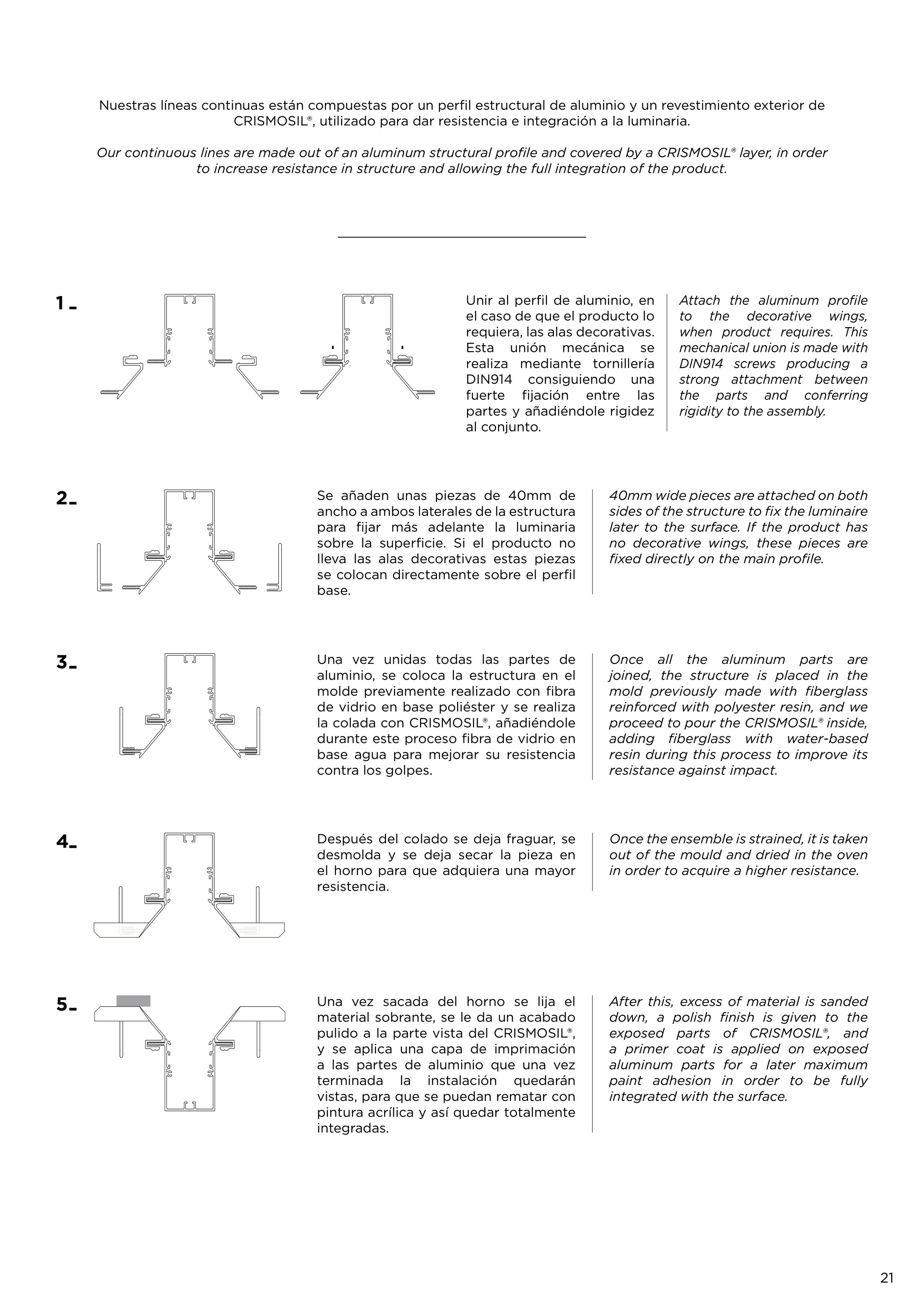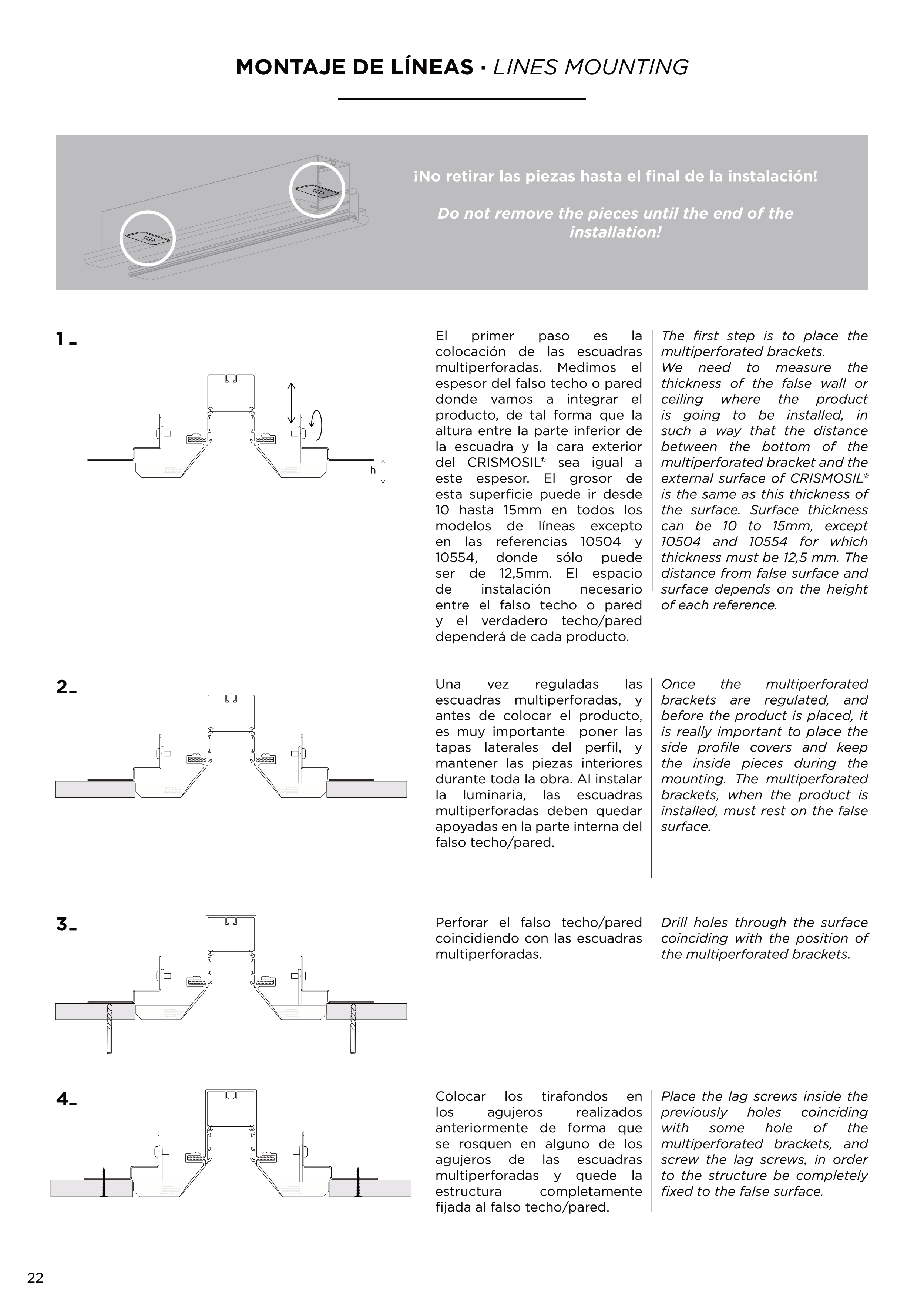21
Once all the aluminum parts are
joined, the structure is placed in the
mold previously made with fiberglass
reinforced with polyester resin, and we
proceed to pour the CRISMOSIL® inside,
adding fiberglass with water-based
resin during this process to improve its
resistance against impact.
Nuestras líneas continuas están compuestas por un perfil estructural de aluminio y un revestimiento exterior de
CRISMOSIL®, utilizado para dar resistencia e integración a la luminaria.
Our continuous lines are made out of an aluminum structural profile and covered by a CRISMOSIL® layer, in order
to increase resistance in structure and allowing the full integration of the product.
Once the ensemble is strained, it is taken
out of the mould and dried in the oven
in order to acquire a higher resistance.
1
2
3
40mm wide pieces are attached on both
sides of the structure to fix the luminaire
later to the surface. If the product has
no decorative wings, these pieces are
fixed directly on the main profile.
4
5
Attach the aluminum profile
to
the
decorative
wings,
when product requires. This
mechanical union is made with
DIN914 screws producing a
strong attachment between
the
parts
and
conferring
rigidity to the assembly.
After this, excess of material is sanded
down, a polish finish is given to the
exposed parts of CRISMOSIL®, and
a primer coat is applied on exposed
aluminum parts for a later maximum
paint adhesion in order to be fully
integrated with the surface.
Una vez unidas todas las partes de
aluminio, se coloca la estructura en el
molde previamente realizado con fibra
de vidrio en base poliéster y se realiza
la colada con CRISMOSIL®, añadiéndole
durante este proceso fibra de vidrio en
base agua para mejorar su resistencia
contra los golpes.
Después del colado se deja fraguar, se
desmolda y se deja secar la pieza en
el horno para que adquiera una mayor
resistencia.
Una vez sacada del horno se lija el
material sobrante, se le da un acabado
pulido a la parte vista del CRISMOSIL®,
y se aplica una capa de imprimación
a las partes de aluminio que una vez
terminada
la
instalación
quedarán
vistas, para que se puedan rematar con
pintura acrílica y así quedar totalmente
integradas.
Se añaden unas piezas de 40mm de
ancho a ambos laterales de la estructura
para fijar más adelante la luminaria
sobre la superficie. Si el producto no
lleva las alas decorativas estas piezas
se colocan directamente sobre el perfil
base.
Unir al perfil de aluminio, en
el caso de que el producto lo
requiera, las alas decorativas.
Esta
unión
mecánica
se
realiza mediante tornillería
DIN914
consiguiendo
una
fuerte
fijación
entre
las
partes y añadiéndole rigidez
al conjunto.



